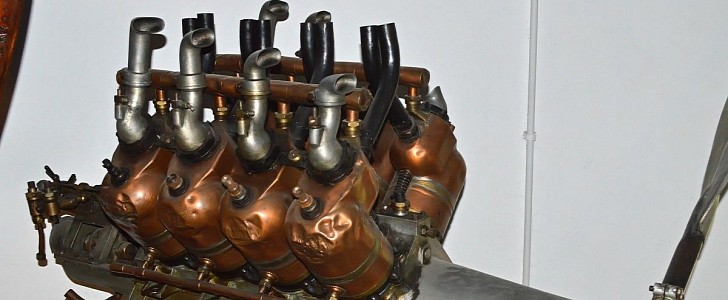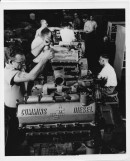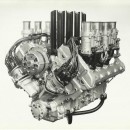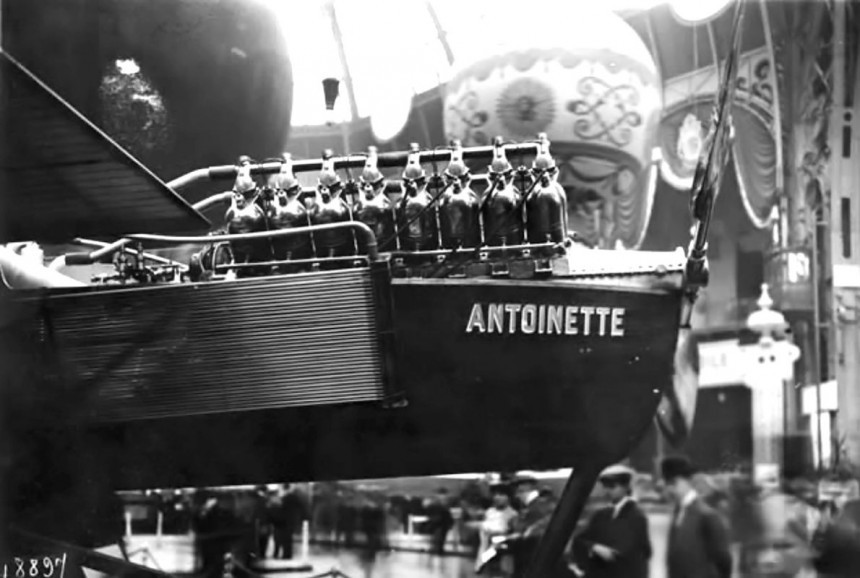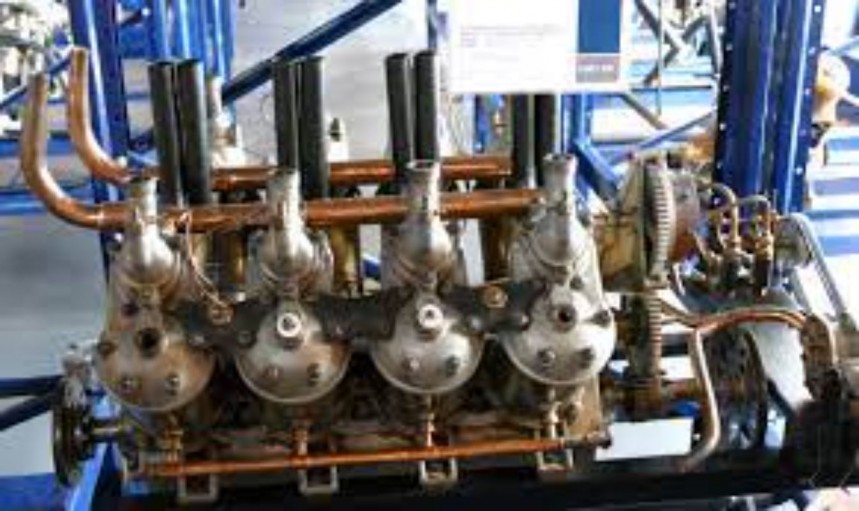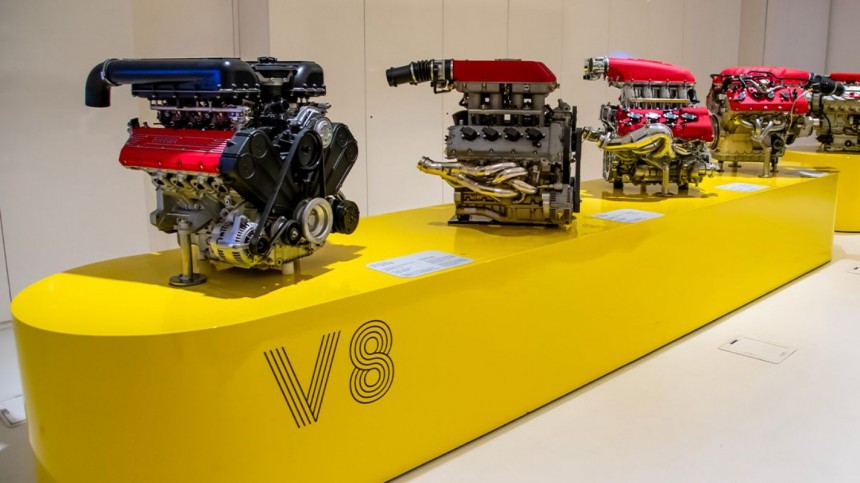We all love the roar of a big V8 engine, and I'm sure every single one of us would like to own a car with a V8. However, we are not so knowledgeable about the history and the guy that gave the automotive industry one of its best attributes.
While the question of who built the very first V8 engine remains the subject of conjecture, we are here to present only facts.
So, where was this engine first created? I mean, it must be America, right? After all, it's the home of this type of power unit, and the V8 represents the heart of every muscle car. But you might be surprised that the first-ever V8 engine actually comes from a country totally opposite from the United States of America. If you haven't guessed it yet, let me open your mind.
The person who patented and thought about putting eight cylinders in a V shape was a Frenchman by the name of Leon Levavasseur. Yeah, the V8 was born in France. What a shocker.
Mr. Levavasseur might look like the wise old guy you see in every animated Disney movie. But in fact, he was a genius engineer and inventor. However, as a fun fact, Leon (born in 1863) first studied fine arts, but he quickly realized that he was much better at engines. So he quit fine arts and started studying engineering. As you can imagine, this was an excellent decision with even better timing because, by the time Levavasseur was in his early 40s, something significant was happening worldwide. In the early 1900s, many pioneers experimented with countless airplane designs, but no one thought about a serious power unit for those airplanes.
While many engineers tried to make their engines as small and light as possible by sacrificing vital things like the displacement or the number of cylinders (sometimes even both), Leon Levavasseur was going in an entirely different direction.
He believed an engine didn't have to work like a microwave oven in order to be capable of flight. He was confident that a power plant could have a lot of power and be light simultaneously. Still, he needed a lot of money for research and development purposes, so in 1902 he approached Jules Gastambide, an industrialist with deep pockets.
To understand the scale of Mr. Levavasseur's genius and vision, airplanes were using one or two cylinders at that time. Some people were "crazy" enough to use three cylinders power units. He envisioned an engine design with eight cylinders split into two banks 90 degrees apart from each other. An immortal technique that is still incredibly popular today, more than a century after its creation.
Needless to say that Jules Gastambide was more than impressed, so he decided to finance the project. In order to show his gratitude, Leon named the engine Antoinette (V8 it's much better, in my opinion) after Gastambide's daughter. Right after, he filed for a secret patent and immediately started working on the power mill. A year later, the first-ever V8 was a functional prototype and went through its first-ever combustion cycle.
In the town of Villotran, Levavasseur started to work on an airplane design to test his creation. As a result, his plane became known as the L'Aeroplane de Villotran but was a total failure. Leon was an amazing engineer, without a doubt, but the aerodynamics elements got the better of him. The best part about his defeat was the engine. The L'Aeroplane de Villotran was equipped with a V8 that had 80 hp, a huge and impressive power figure for that era.
As a result, both Gastambide and Levavasseur knew the engine had potential in other areas. So, they decided to abandon airplanes and focus on speedboat racing. Trust me, we will talk about cars sooner or later. By 1904 every winning and record-breaking speedboat had an Antoinette engine in them.
By 1910, Leon Levavasseur had built various engines of various sizes and configurations, even building a V24 engine for marine applications. At the same time, he was using fuel injection (although quite a primitive form of it) instead of a carburetor which for that era was incredibly advanced.
Now, let's move to cars. In 1906, a vehicle powered by an Antoinette engine was presented at the Paris Motor Show. Leon decided to change his approach regarding road cars' power units. In the interest of reliability and longevity, he made the internal engine components more robust, resulting in a heavier engine with a lower horsepower output (around 30 hp). However, it had a much longer lifespan compared to the aviation ones.
De Dion-Bouton introduced a 7.7-liter V8 for a car in 1910 and displayed it in New York two years later. It was produced only in small quantities but inspired several American manufacturers to follow suit. One of the first production automobile V8s was introduced in the US in 1914 by Cadillac, a division of General Motors, which sold 13,000 of the 5.4-liter (330 cu in) L-head engines in its first year of production.
The V8 has come a long way, with particular manufacturers extracting enormous horsepower from it. Undoubtedly, it will remain one of history's most legendary and beloved engines.
So, where was this engine first created? I mean, it must be America, right? After all, it's the home of this type of power unit, and the V8 represents the heart of every muscle car. But you might be surprised that the first-ever V8 engine actually comes from a country totally opposite from the United States of America. If you haven't guessed it yet, let me open your mind.
The person who patented and thought about putting eight cylinders in a V shape was a Frenchman by the name of Leon Levavasseur. Yeah, the V8 was born in France. What a shocker.
Mr. Levavasseur might look like the wise old guy you see in every animated Disney movie. But in fact, he was a genius engineer and inventor. However, as a fun fact, Leon (born in 1863) first studied fine arts, but he quickly realized that he was much better at engines. So he quit fine arts and started studying engineering. As you can imagine, this was an excellent decision with even better timing because, by the time Levavasseur was in his early 40s, something significant was happening worldwide. In the early 1900s, many pioneers experimented with countless airplane designs, but no one thought about a serious power unit for those airplanes.
While many engineers tried to make their engines as small and light as possible by sacrificing vital things like the displacement or the number of cylinders (sometimes even both), Leon Levavasseur was going in an entirely different direction.
To understand the scale of Mr. Levavasseur's genius and vision, airplanes were using one or two cylinders at that time. Some people were "crazy" enough to use three cylinders power units. He envisioned an engine design with eight cylinders split into two banks 90 degrees apart from each other. An immortal technique that is still incredibly popular today, more than a century after its creation.
Needless to say that Jules Gastambide was more than impressed, so he decided to finance the project. In order to show his gratitude, Leon named the engine Antoinette (V8 it's much better, in my opinion) after Gastambide's daughter. Right after, he filed for a secret patent and immediately started working on the power mill. A year later, the first-ever V8 was a functional prototype and went through its first-ever combustion cycle.
In the town of Villotran, Levavasseur started to work on an airplane design to test his creation. As a result, his plane became known as the L'Aeroplane de Villotran but was a total failure. Leon was an amazing engineer, without a doubt, but the aerodynamics elements got the better of him. The best part about his defeat was the engine. The L'Aeroplane de Villotran was equipped with a V8 that had 80 hp, a huge and impressive power figure for that era.
By 1910, Leon Levavasseur had built various engines of various sizes and configurations, even building a V24 engine for marine applications. At the same time, he was using fuel injection (although quite a primitive form of it) instead of a carburetor which for that era was incredibly advanced.
Now, let's move to cars. In 1906, a vehicle powered by an Antoinette engine was presented at the Paris Motor Show. Leon decided to change his approach regarding road cars' power units. In the interest of reliability and longevity, he made the internal engine components more robust, resulting in a heavier engine with a lower horsepower output (around 30 hp). However, it had a much longer lifespan compared to the aviation ones.
De Dion-Bouton introduced a 7.7-liter V8 for a car in 1910 and displayed it in New York two years later. It was produced only in small quantities but inspired several American manufacturers to follow suit. One of the first production automobile V8s was introduced in the US in 1914 by Cadillac, a division of General Motors, which sold 13,000 of the 5.4-liter (330 cu in) L-head engines in its first year of production.
